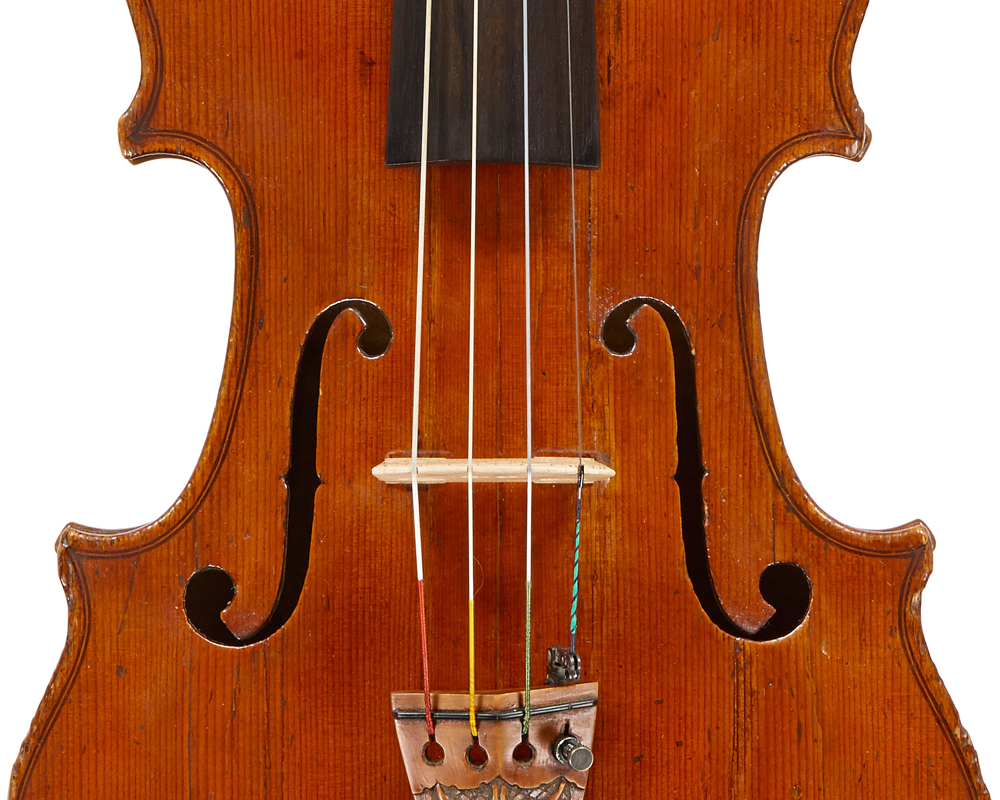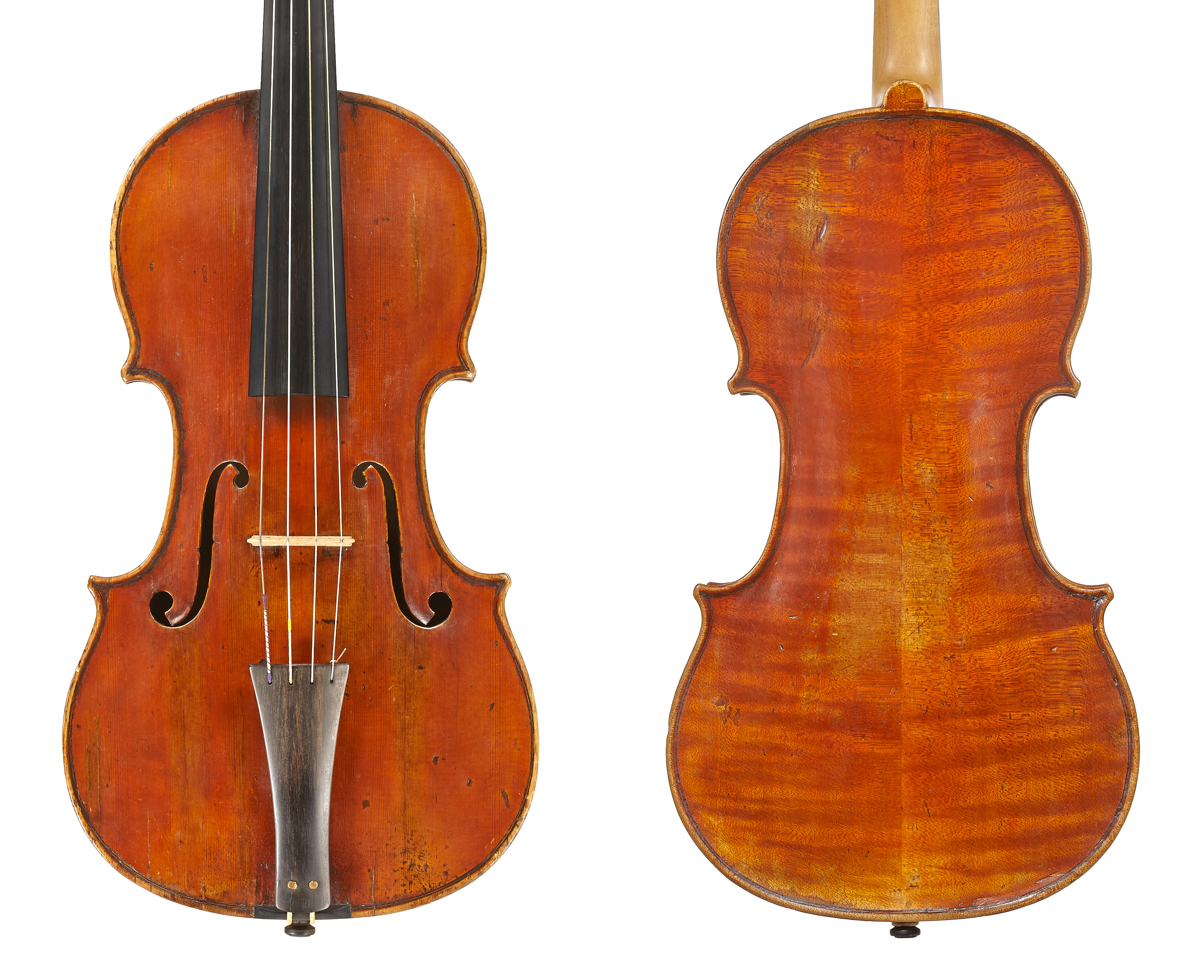In 18th-century Spain the Guillami family ran one of two outstanding workshops, the other belonging to the Contreras family. Intensive research in the Barcelona Guild of Carpenters (‘Gremi de fusters de Barcelona’) archives by Joan Pellisa has shown that the name ‘Guillami’ can be traced back to the 16th century.
The first person of that name who can be clearly identified as a guitar maker is Rafel Guillami. He could be related to the subsequent Joan Guillami i Nin, although there is no documentary proof. Barcelona’s cathedral archives have suffered losses over the years from fires and looting that have made it impossible to locate Joan Guillami’s birth certificate. However, several official documents point to 1699 as his official year of birth, rather than the commonly accepted 1702.

The distinctive Guillaumi brand, set close to the soundpost. Photo: Tarisio
With a business established on the ‘Carrer des Escudillers’ in Barcelona, Joan Guillami became a master maker in 1721. He died in 1767, as shown by the word ‘Obit’ noted in the records of the annual Guild subscriptions for that year. Joan Guillami ‘filius’ would have taken over his father’s workshop and, since we have encountered similar problems in finding documentary evidence of Guillami ‘filius’s birth and death, we will keep the widely accepted dates of 1739–1819.
The violin shown here, made by Joan Guillami, has an original label dated 1755 and the viola, made by Joan Guillami ‘filius’, has a typical handwritten label of that period. The distinctive GVILLAMI brand, set close to the soundpost, is visible in both instruments. While it has been said that this procedure was never used by Guillami ‘filius’ after 1779, in fact it has been found recently in some later instruments.
Both instruments are quite Italianate in construction, with classical pins in the back and a distinctive Genoese-style scroll. This scroll template seems to have been used by the Guillamis throughout their lives for both violins and cellos. As John Dilworth points out in our book, it is possible that Guillami could have encountered Genoese instruments since Genoa was a natural trading partner of the Iberian peninsula, and Barcelona in particular.

Viola by Joan Guillami ‘filius’, mid-18th century. Photo: Tarisio
The heavily chambered scroll, retaining traces of black stain, and the backward-leaning head with the slightly squared-off chin, help to make these makers identifiable at a glance. The soundholes are nicely cut and we can see the clear influence of the father in the viola, with the tendency that developed in his later violas for smaller wings with a much broader appearance.
Due to the strict regulations of the Barcelona Guild of Carpenters concerning the use of imported materials, similar locally grown species were used for both instruments. The backs feature two matched pieces of quarter-sawn hardwood, while the bellies are of fine softwood. Unfortunately recent dendrochronological analysis carried out on Guillami family instruments by the expert Peter Ratcliff has proved inconclusive. The local pine timber from the Pyrenees has shown over the years a tendency to develop cracks. This is one reason why few Guillami instruments have survived in top condition, and several have replacement tops made later by Ignacio Fleta.
The Golden Age of Violin Making in Spain ed. Jorge Pozas (contributors: John Dilworth, Peter Ratcliff, Brigitte Brandmair, Cristina Bordás, Elsa Fonesca and Joan Pellisa; photography by Jan Röhrmann) was published by Trito Editions, Barcelona, in 2014.
